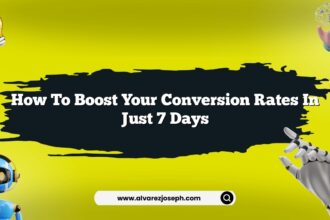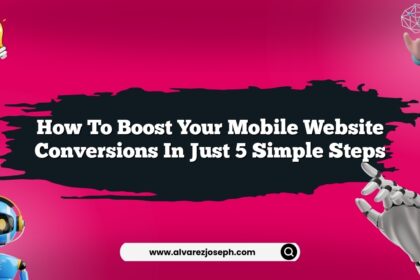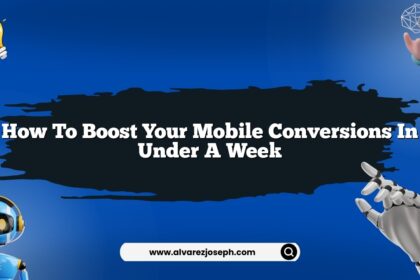What’s up, my friend? Let’s dive into a topic that can make or break your online business: trust and conversions. I mean, think about it. You can have the flashiest website with all the bells and whistles. But if your visitors don’t trust you, they’re out the door faster than you can say “checkout.” So, let’s get real. Building trust isn’t just a nice-to-have. It’s a must-have.
In this chat, I’m gonna dish out five simple steps to build that all-important trust and boost your conversions. It’s not rocket science, but it does take a bit of strategy and some elbow grease. Trust me; by the end of this, you’ll feel like a pro at winning over your audience. Let’s get into it!
1. The Power of Social Proof
Okay, let’s not kid ourselves. People like following the herd. If you see a restaurant packed with people, you’re more likely to give it a shot, right? That’s the magic of social proof. It’s about showing potential customers that others have had a great experience with you.
-
Customer Reviews: Seriously, if you don’t have testimonials on your site, what are you doing? They’re like the gold stars of online shopping. If a stranger vouches for you, I’m much more likely to drop my credit card info. Make sure to showcase those reviews front and center.
-
Case Studies: If you’ve got a good story to tell about how your product helped someone, scream it from the rooftops. People love a good narrative. It gives them hope that your product might solve their problems too.
-
User-Generated Content: Encourage your customers to post photos or videos using your product. Feature them on your site or social media. This not only builds trust but also gives your brand a sense of community.
Here’s the secret behind it: the more proof you have that others have trusted you, the more new customers will feel comfortable doing the same.
2. Transparency is Key
Listen up. If you want trust, you can’t be shady. I’m sorry, but this doesn’t make sense. Customers want to know who they’re dealing with and what to expect. So let’s talk about transparency.
-
Clear Policies: Be upfront about your return and shipping policies. Don’t hide them in some obscure corner of your site. Make them easy to find. I mean, who wants to hunt for that stuff? Not me.
-
About Page: Let your audience in on your story. What’s your mission? Who’s behind the brand? This personal touch makes you relatable. If I can connect with you on a human level, I’m more likely to trust you.
-
Trust Badges: Got any certifications or security seals? Show them off! These little badges can make a big difference. They work like a bouncer at a club, letting people know it’s safe to enter.
Transparency builds trust faster than you can say “you’ve got mail.” The more honest and open you are, the more likely people will stick around.
3. Optimize Your Site for User Experience
Let’s be real here. If your website looks like it was built in 1999, you’re in trouble. A shabby site screams “shady business.” So, let’s spruce it up, shall we?
-
Fast Load Times: Ain’t nobody got time for slow websites. If your site takes ages to load, I’m clicking away. Use tools to check your load times and fix those pesky issues.
-
Mobile-Friendly Design: Everyone’s on their phones nowadays. If your site isn’t optimized for mobile users, you’re missing out. Make it easy for them to navigate and shop.
-
Simple Checkout Process: Think about it. If I’m one step away from buying and I face a complicated checkout, I’m out. No questions asked. Keep it clean and straightforward.
Here’s the kicker: a smooth user experience doesn’t just build trust. It leads to higher conversions. It’s a win-win!
4. Effective Communication Is Everything
Imagine you’re in a store, and no one helps you. Frustrating, right? That’s how your customers feel when they can’t reach you. Communication is key, my friend.
-
Live Chat Support: Nothing beats instant answers. If I can chat with someone while I shop, I feel taken care of. Set up a live chat option so customers can reach out in real-time.
-
Email Follow-Ups: After someone makes a purchase, shoot them a follow-up email. Thank them! Ask how they’re enjoying the product. This little gesture goes a long way in building loyalty.
-
Social Media Engagement: Don’t just post and ghost. Respond to comments and messages. It shows you care. Plus, engaging with your audience on social media can help you gather valuable feedback.
Let’s be honest: good communication can turn a one-time buyer into a loyal customer. And loyal customers? They’re worth their weight in gold.
5. Leverage Authentic Content
Okay, let’s wrap this up with a cherry on top. Content can either make or break your brand. Quality is vital, but authenticity is what seals the deal.
-
Blogging: Share your expertise! Write how-to guides, product comparisons, or industry insights. This not only establishes you as an authority but also helps your customers solve their problems.
-
Videos: People love video content. Create tutorials or behind-the-scenes clips. Show your audience how your product works and the people behind the brand. It’s all about connection.
-
Storytelling: Share your journey, the ups and downs. People resonate with relatable stories. This emotional connection can create a strong bond with your audience.
Here’s what you need to know: authentic content builds trust faster than any ad. If your audience can relate to you, they’re more likely to stick around and buy.
Quick Summary
- Social Proof: Showcase reviews, case studies, and user-generated content.
- Transparency: Be clear about policies and share your brand story.
- Site Optimization: Ensure fast load times, mobile-friendliness, and a simple checkout.
- Communication: Use live chat, email follow-ups, and engage on social media.
- Authentic Content: Create valuable blog posts, videos, and share your story.
Frequently Asked Questions
What is social proof, and why is it important?
Social proof is the idea that people will follow the actions of others. It’s important because it builds trust. When potential customers see others have had positive experiences, they’re more likely to make a purchase.
How can I be transparent with my customers?
Be upfront about your policies, share your brand’s story on your About page, and display trust badges prominently on your site. Transparency fosters trust.
What are some common mistakes in website design that harm trust?
Slow load times, cluttered layouts, and lack of mobile optimization are big no-nos. A confusing checkout process is also a killer. Keep it clean and user-friendly.
How often should I communicate with my customers?
After a purchase, follow up with a thank you. Engage with them via email and social media regularly. The key is to find a balance—don’t overwhelm them, but stay present.
What types of content should I create for my audience?
Focus on how-to guides, product comparisons, and storytelling. Video content is also great for engagement. Authentic content builds a connection and keeps customers coming back.
How do I know if my trust-building efforts are working?
Monitor your conversion rates, customer feedback, and engagement metrics. If you see positive changes in these areas, you’re on the right track!
And there you have it! You’ve got the scoop on building trust and boosting conversions in five straightforward steps. Now, go out there and make it happen!












